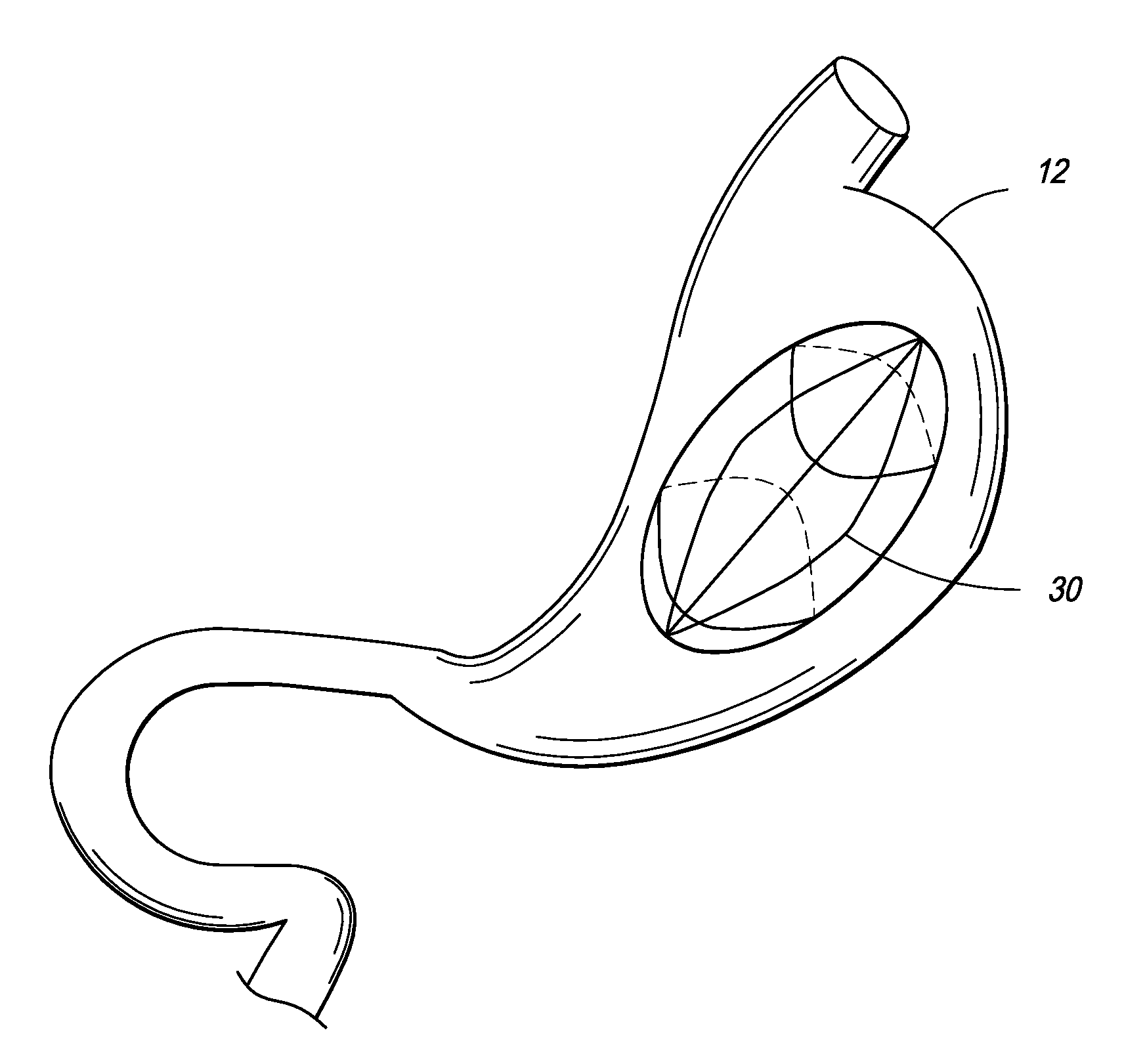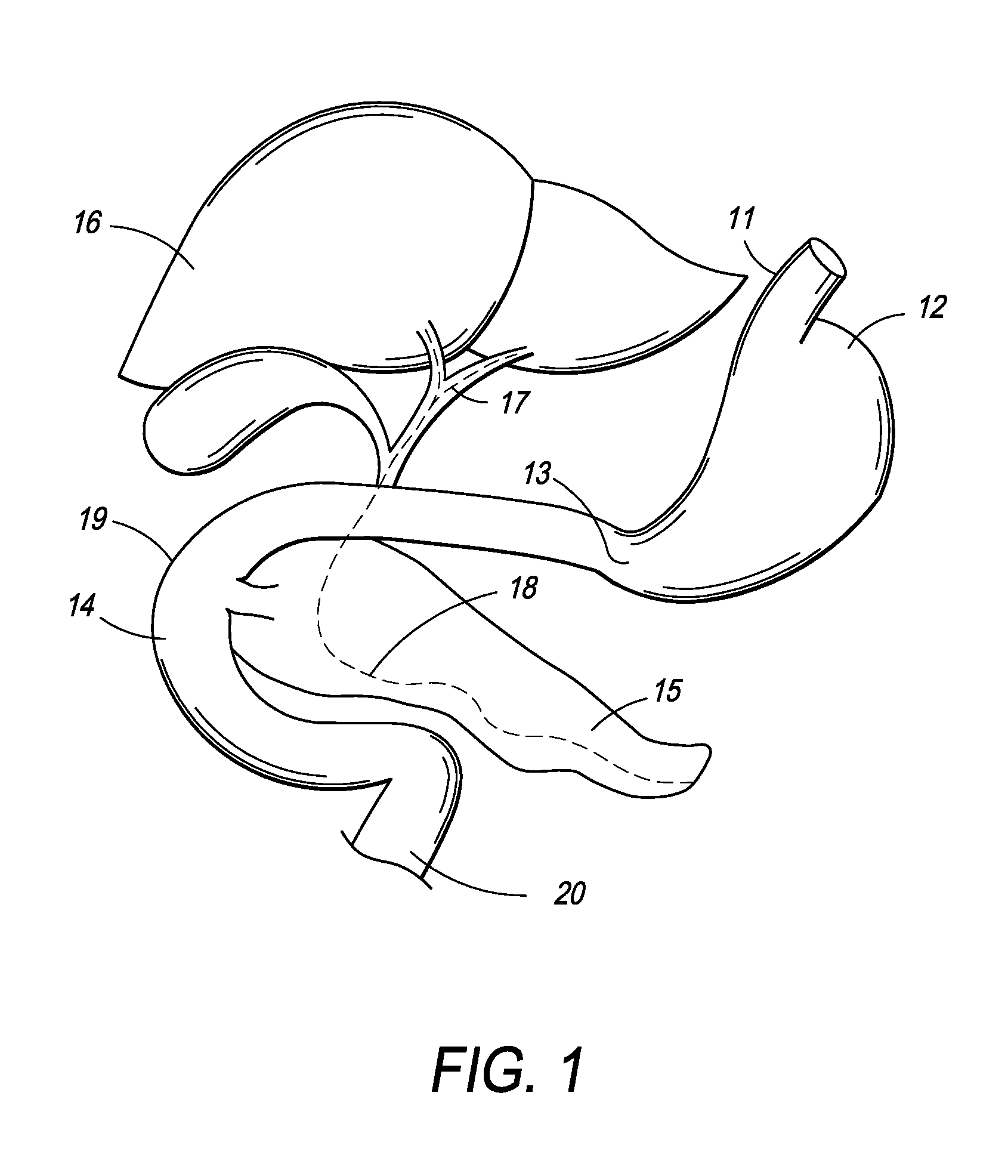Intragastric Device for Treating Obesity
a technology of intragastric devices and obesity, applied in the field of medical devices, can solve the problems of reducing the odds of attaining an average lifespan, affecting the health of patients, and reducing the odds of achieving an average lifespan
- Summary
- Abstract
- Description
- Claims
- Application Information
AI Technical Summary
Benefits of technology
Problems solved by technology
Method used
Image
Examples
Embodiment Construction
[0061]In one embodiment, the present invention is directed towards an intragastric device of dynamic weight used in obese patients to induce weight loss. In one embodiment, the intragastric device contains a non-inflatable wire mesh structure, or a spiral structure made of shape memory metal or shape memory polymer that changes from a pre-deployment compressed cylindrical shape to a post-deployment sphere, oval, kidney bean or any predefined shape of significant volume. The device changes back and forth from the pre-deployment to post-deployment shape by minimal mechanical force and / or temperature changes arising from the room temperature pre-deployment shape to the body temperature post-deployment shape. The device is delivered endoscopically to the stomach via a catheter. The device can be placed through the endoscope, over an endoscope or over a guidewire with endoscopic or fluoroscopic guidance / assistance.
[0062]The device has a pre-deployment compressed shape to facilitate inser...
PUM
 Login to View More
Login to View More Abstract
Description
Claims
Application Information
 Login to View More
Login to View More - R&D
- Intellectual Property
- Life Sciences
- Materials
- Tech Scout
- Unparalleled Data Quality
- Higher Quality Content
- 60% Fewer Hallucinations
Browse by: Latest US Patents, China's latest patents, Technical Efficacy Thesaurus, Application Domain, Technology Topic, Popular Technical Reports.
© 2025 PatSnap. All rights reserved.Legal|Privacy policy|Modern Slavery Act Transparency Statement|Sitemap|About US| Contact US: help@patsnap.com



